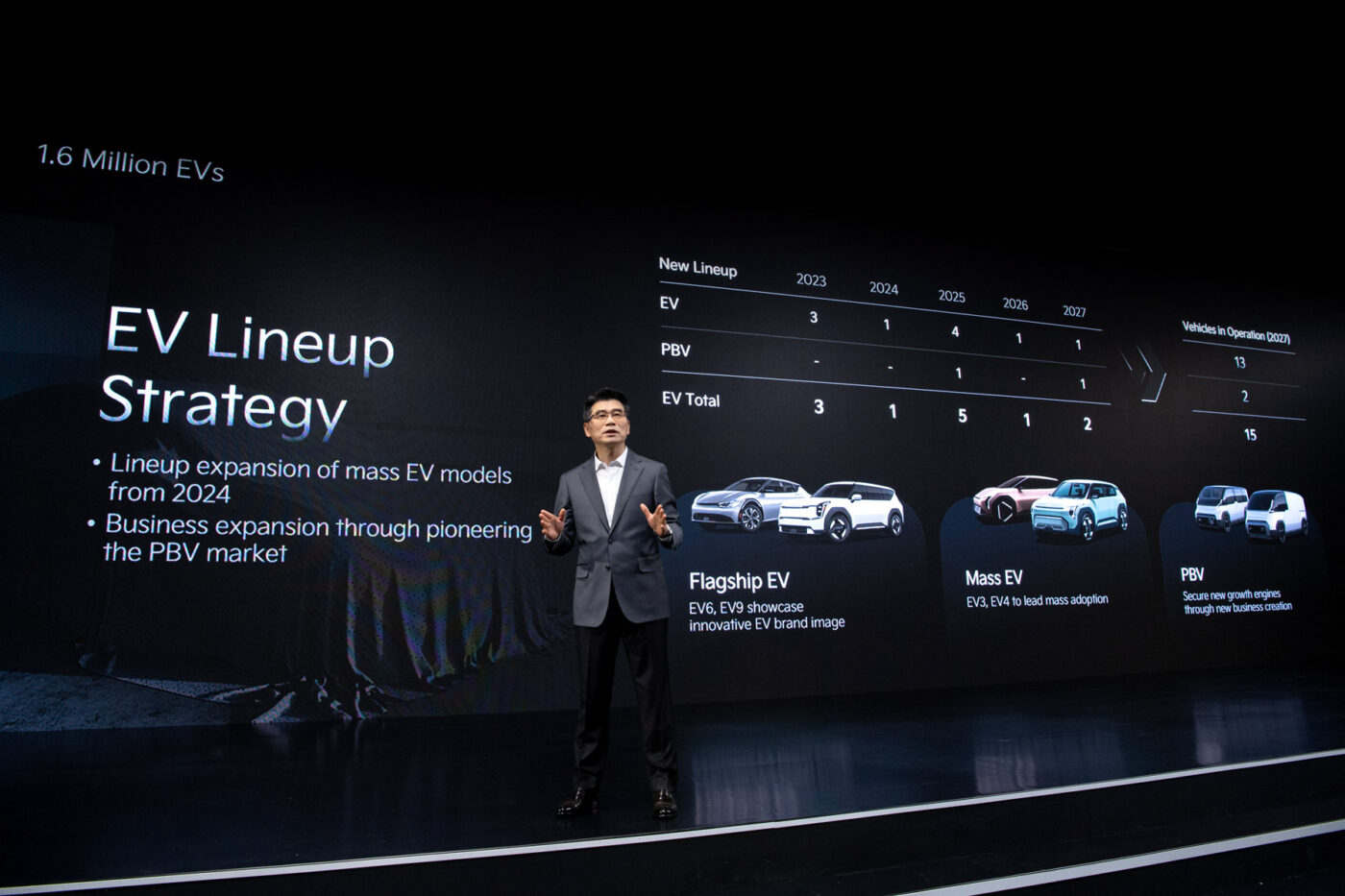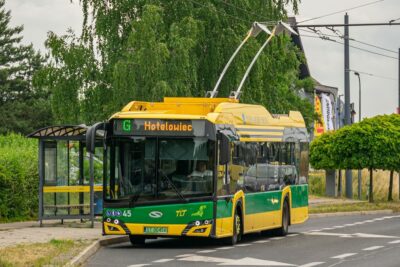Kia keeps electric targets for 2030 constant
Kia wants to achieve annual sales of 1.6 million all-electric cars by 2030 with 15 BEV models. The carmaker also specified sales targets for its special electric vehicles for the first time, saying it wants to sell 250,000 of the so-called PBV electric vehicles per year by 2030, including 150,000 units of the PV5, which will launch in 2025 and 100,000 units of the PV7, scheduled to launch in 2027. These two PBV models would thus account for around 15 per cent of Kia’s electric vehicle sales.
Across all drive types, Kia aims for a total of 4.3 million units in 2030, meaning an electric share of 37.2 per cent. The “electrified vehicles” – i.e. including hybrids and plug-in hybrids – are expected to make up 58 per cent of the 2030 target with 2.48 million units. Kia also announced that it will strengthen its HEV range “to manage fluctuation in EV demand.”
“While the long-term EV demand for 2030 is expected to remain unchanged, the pace of demand growth may prove uneven in the near term. Factors such as a weaker global economic growth, reduction of EV subsidies, and slower adaption of charging infrastructure might affect EV demand,” Kia says. The carmaker plans to expand its hybrid range from six to nine models by 2028.
Kia also mentions an EV2 for the first time. The small electric car is one of the six new electric models that Kia plans by 2026. However, there are no further details, and the EV2 is only included in a list. The others are the EV5, the EV4 and EV3, which have already been presented as studies, and two region-specific electric models, including the Carens EV for the Indian market. The EV2, EV4, and EV5 models will be offered “in major markets, including the US, Europe, and South Korea.”



In addition to expanding the model range, the company also mentions that Kia will “improve battery performance and secure cost competitiveness” and is “pushing a charging infrastructure expansion strategy around the globe.” It specifically lists the South Korean charging network of the Hyundai Motor Group, E-Pit, the US joint venture Ionna and, for Europe, Ionity.
The short-term business goals for 2024 include the presentation of the EV3, of which only a study and primary technical data are available. In addition, a “product enhancement” is planned for the EV6, i.e. a facelift for the E-GMP model that has been available since 2021. The adoption of the new battery from the Hyundai Ioniq 5 with an energy content of 84.0 kWh instead of 77.4 kWh, as well as a slight visual facelift, is possible but not confirmed in the strategy statements. That will likely also apply to the powerful Kia EV6 GT, which is listed separately.
“Following our successful brand relaunch in 2021, Kia is enhancing its global business strategy to further the establishment of an innovative EV line-up and accelerate the company’s transition to a sustainable mobility solutions provider,” says Ho Sung Song, Kia President and CEO. “By responding effectively to changes in the mobility market and efficiently implementing mid-to-long-term strategies, Kia is strengthening its brand commitment to the wellbeing of customers, communities, the global society, and the environment.”





0 Comments